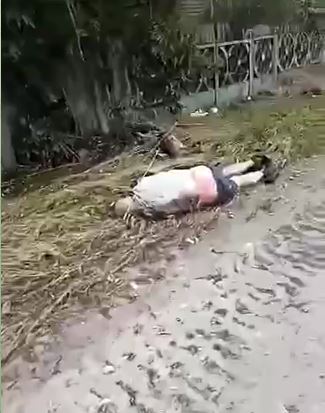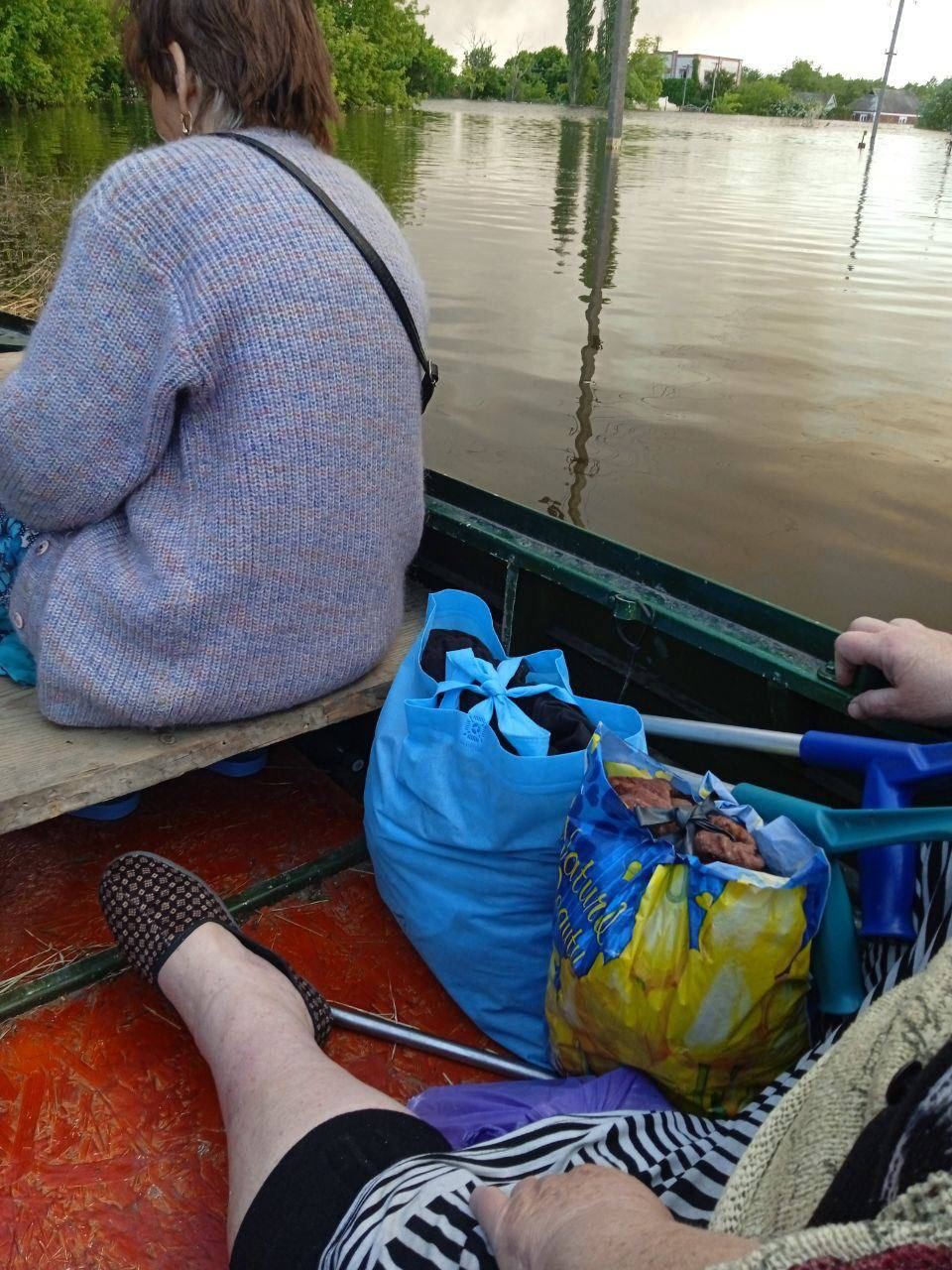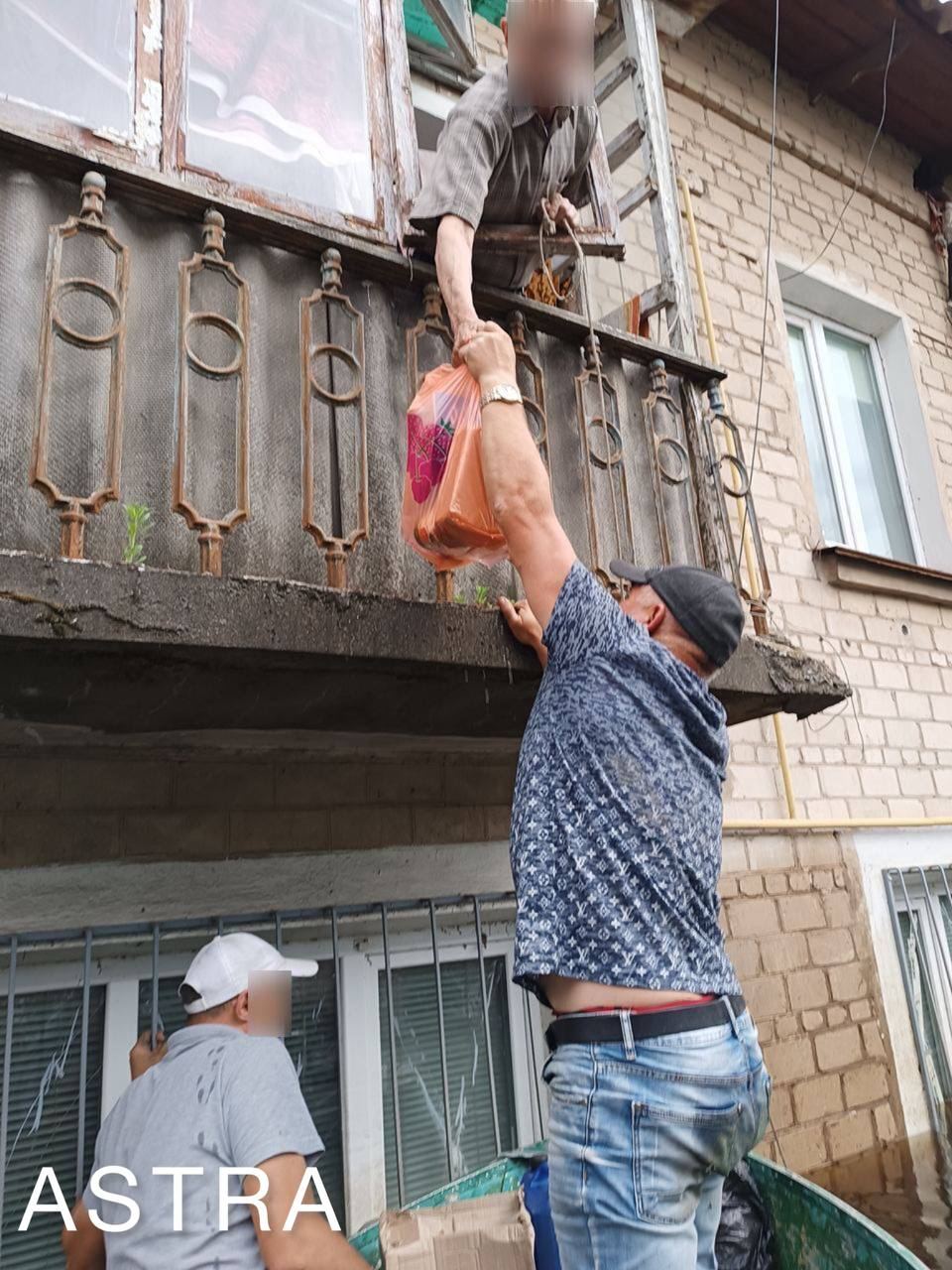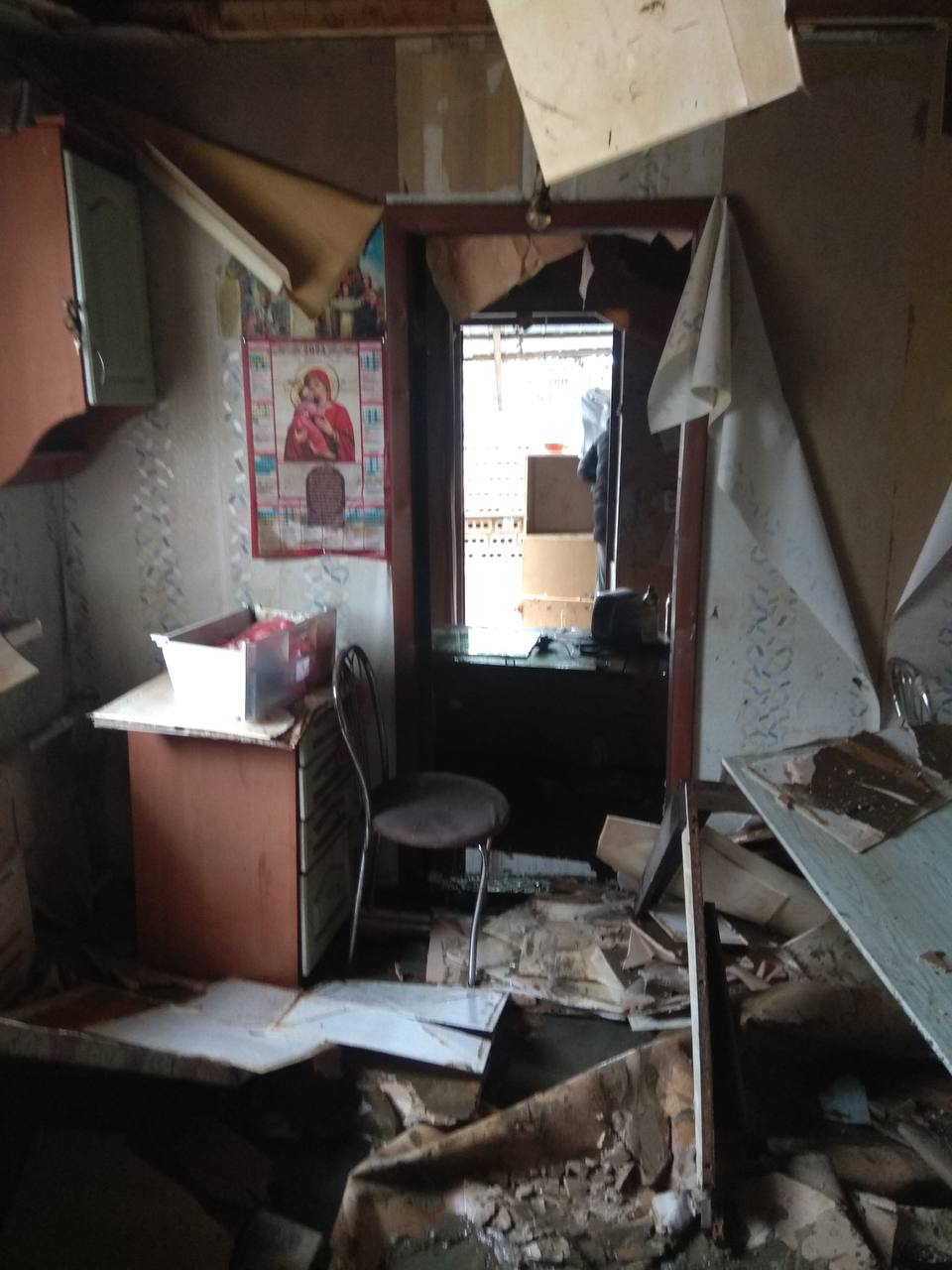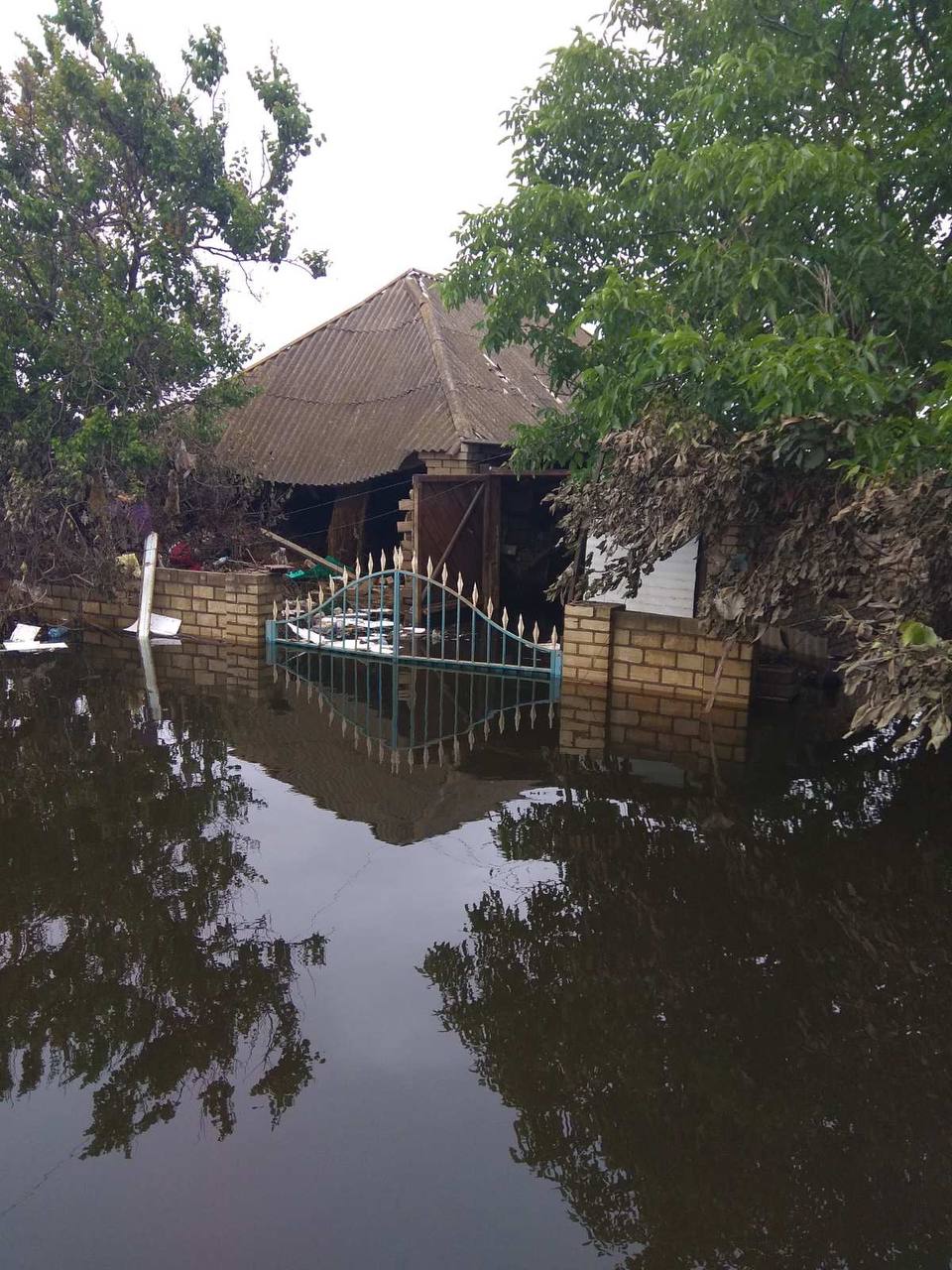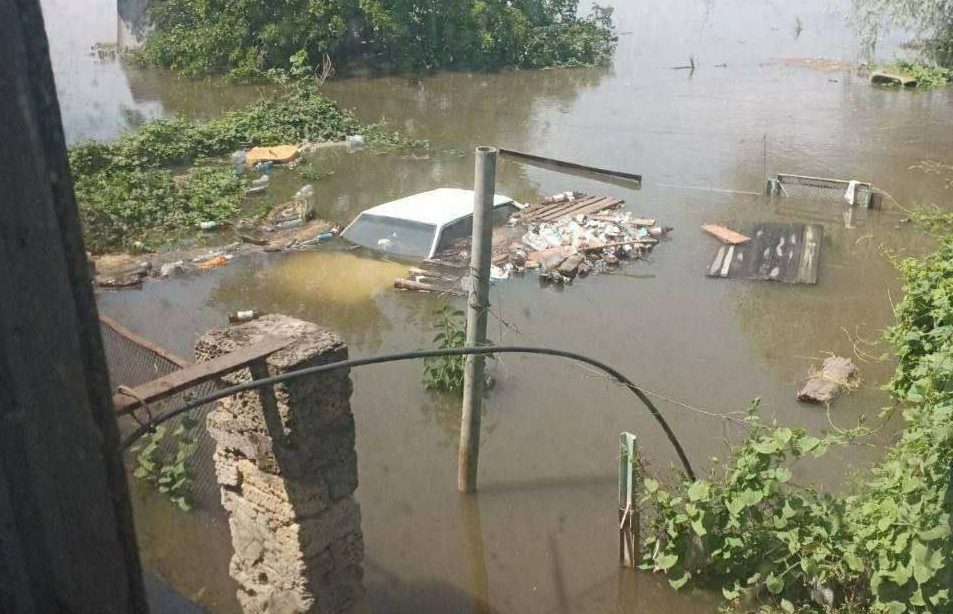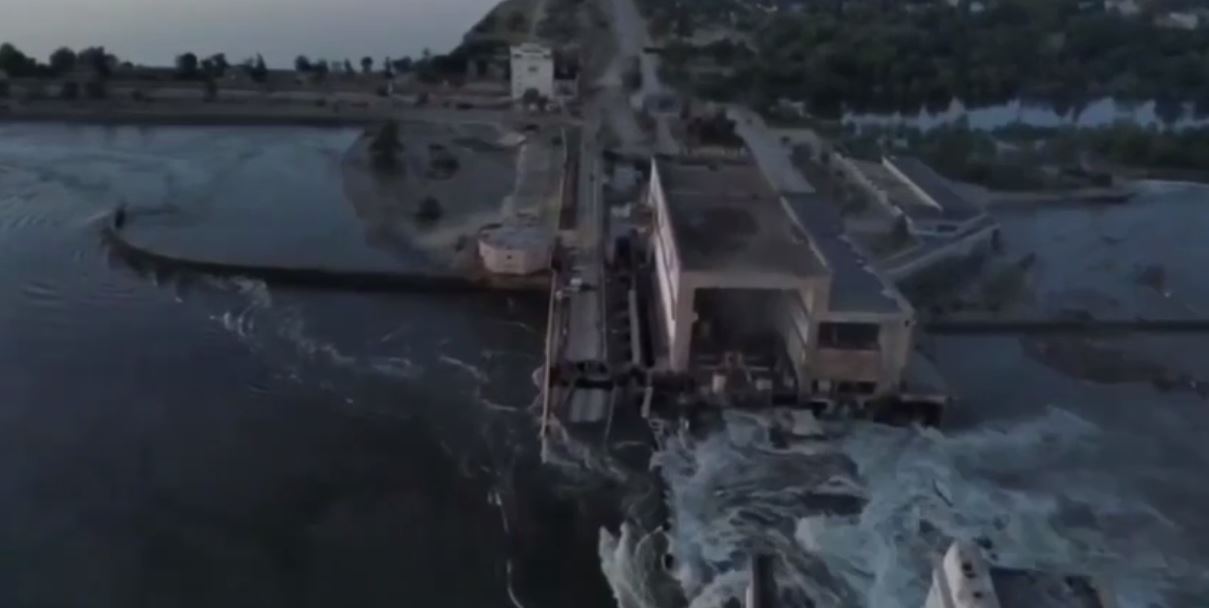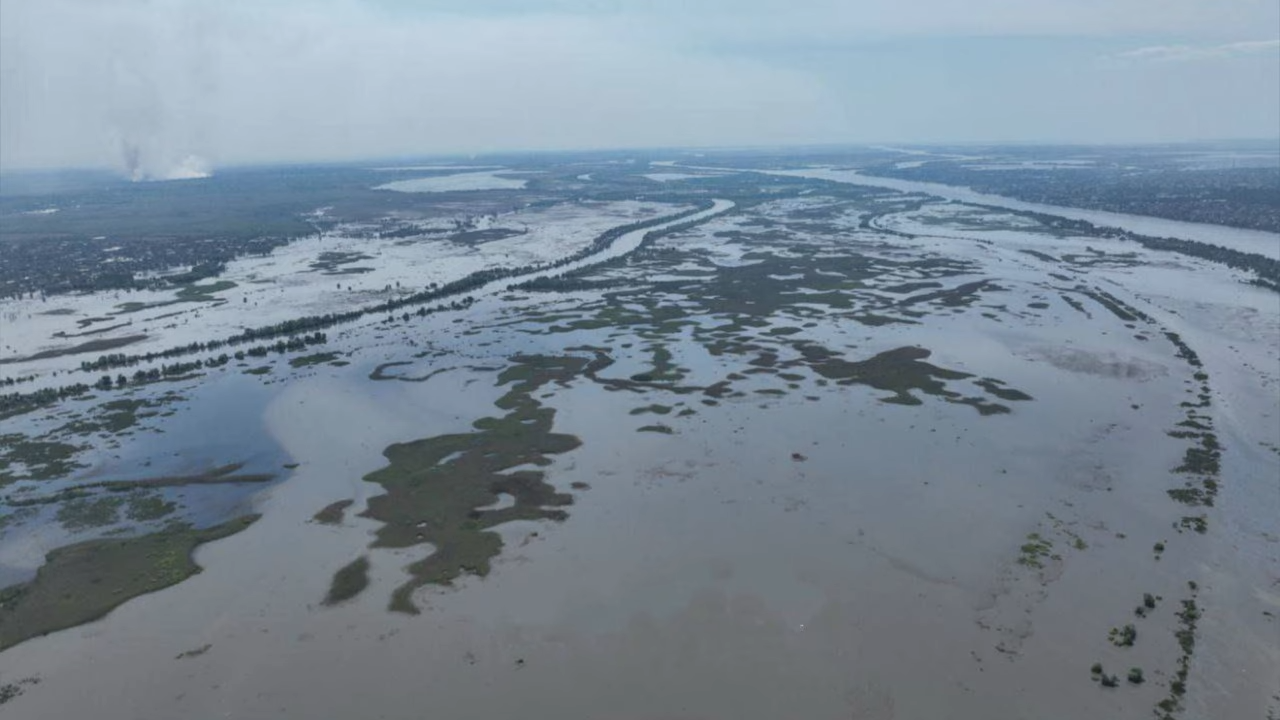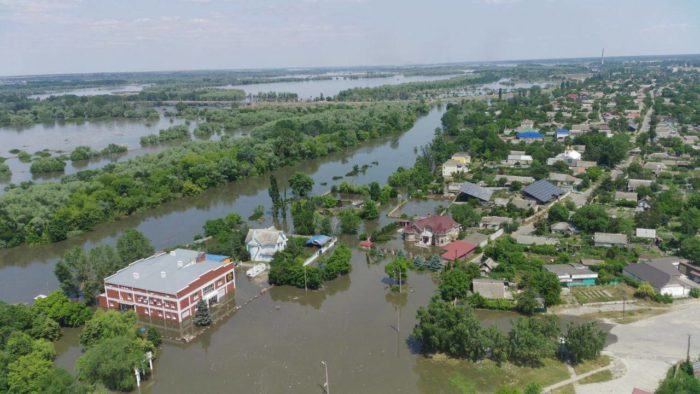Ten days following the demolition of the Kakovka dam by Russia in the Kherson Oblast of southern Ukraine, a volunteer rescue team continues to be the primary force rescuing civilians and delivering food and water. The Russian authorities are not only in no hurry to help those in need, they intimidate the volunteer rescuers, confiscate their equipment, and steal humanitarian aid to distribute it under their own name.
Five days ago, Yaroslav told us he was forced to launch a volunteer initiative to save people suffering from the flood because the Russian occupation authorities did not. Now, he says that the situation is still critical; water levels have fallen, and there are not as many fully submerged houses.
Nevertheless, people still need evacuation, medicines, and food. His group continues working to provide aid in conditions when neither the Russian occupying authorities nor international organizations stepped in to alleviate human suffering and prevent deaths.
When we talked last, Yaroslav mentioned a threat of Russia sealing off Hola Prystan due to quarantine; this would have cut off his group's logistical rescue routes, as well as prevented the supply of medicine and food delivered by volunteers. However, the quarantine eventually did not happen because the media raised the alarm.
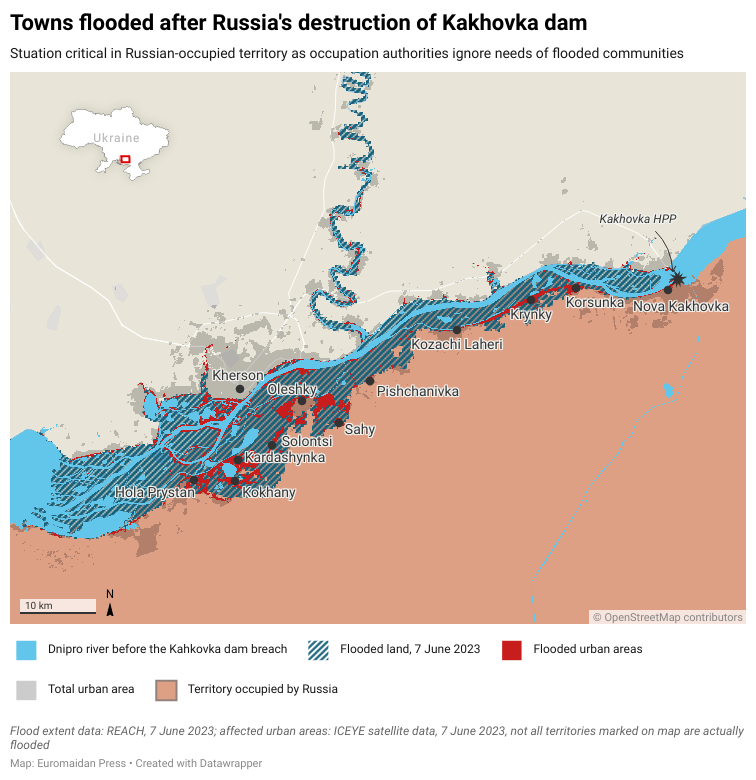
Corpses everywhere
Why did the Russian occupation authorities contemplate such a step? Yaroslav suspects it's to hide the number of corpses of people who died during the flood due to Russian inaction.
His volunteers now run a special mission to extract corpses from flood-affected towns and request boats and equipment specifically for this purpose.
"Very many" people died, Yaroslav says, believing Russia will attempt to hide how many exactly.
Footage shared from Oleshky shows a corpse lying simply on the streets. Another body is seen hanging on a fence, apparently being carried there by the flood of water.
Corpses on the streets of Oleshky. Screenshot from courtesy video; image shared by TG channel and confirmed by Yaroslav to be from Oleshky
Several days ago, the morgue of Oleshky, a city that Russia had indeed sealed off, blocking any volunteers from entering and delivering humanitarian aid, was overfilled; bodies were not being accepted. Neither were they being given back to relatives; rumors swirled that those killed by the flood would be buried in mass graves, Yaroslav told.
As of 15 June, the morgue was empty, and "there were very many bodies." Those flood victims who had relatives were buried by them; the others were buried in plastic body bags on the new cemetery.
When the flood broke out, his volunteers were the only ones attempting a rescue, while the Russian authorities created obstacles and took away their boats. The authorities have started being more active, but the volunteers are still the main force delivering crucial aid. They still sometimes get obstructed by the Russians, who stop their cars with food and medicines at checkpoints and prevent them from entering. The volunteers have learned to navigate the back-alley entrances into towns in order to complete their mission.
Evacuation. Photos via Astra TG channel
It is getting more challenging to deliver items because the water has dropped by roughly a meter, and the boats now scrape the ground at shallow points. The volunteers plan on conducting water depth measurements to be able to operate.

Evacuation points as traps
If non-Russian passport holders were prevented five days ago from leaving flooded towns, now those with Ukrainian passports are permitted to leave, albeit with phone checks; Yaroslav knows of two such cases. Nevertheless, it is difficult for the volunteers to continue their humanitarian mission, as the Russian occupiers obstruct their actions.
"We can't organize, arrange anything normally," Yaroslav complains. "They don't let buses into Oleshky, for instance, because they do the evacuation themselves. But they send in only two buses, and the word is out that the people are taken to distribution points. Most people don't want to go there."
These distribution points are Soviet-era resorts (Yaroslav knows of two specific ones in Zaliznyi Port) which the evacuees are prevented from leaving, with their phones taken away. They essentially act as a filtration point, the system Russia uses in occupied territories to weed out anybody capable of resistance.
Humanitarian aid is also terribly lacking. The Russian occupation authorities give it out only in one location, people wait in long lines, which is challenging for the elderly and disabled, and supplies run out before their turn. Despite these shortcomings, Russian propaganda media are painting a picture of Russia's capable help, exploiting the lack of independent voices in the occupied territories.
This is why Yaroslav's team keeps working. Currently, they have 17 people who go around doing the physical work in the boats, and many more are involved in organizing online. They both deliver food and evacuate people:
"For instance, yesterday, we delivered food to critical spots. And today, one wonderful religious group showed up. They have a special bus for 7-8 people. They go by car and boat. So first they picked up people by land, delivered them to Radensk or even further, came back, got more people. Or swam to get people off the roofs [of houses inundated in floodwater]. And there's another group that works only on the water. They also get people out, but they also collect the coprses."
Oleshky mayor Ryschuk also confirms that in the first 3-4 days, the Russian authorities did nothing to help the victims. Now food is being delivered, but there is no drinking water, as all the water in the wells is contaminated.
Now, according to the mayor, a new group of Russian troops has entered the village, and even six tanks: "They return because they understand the risk."
There are dozens of confirmed deaths, those with established entities, Yaroslav says, sharing lists of names. He supposes there will be hundreds.
to Oleshky mayor Yevhen Ryshchuk, the occupation authorities are not systematically handling the issue of the dead; however, he is skeptical there will be hundreds. According to Ryshchuk, representatives of the self-proclaimed "authorities" issue death certificates for drowned people only to identified persons; in the morgue, where there is no light, two unidentified bodies lie, and no one knows who these people are. There is also information that the Russians are allegedly taking away some bodies - it is unknown whose bodies they are taking or where they are going.
As the water recedes, the destruction caused by the flood becomes apparent. Courtesy photos
The volunteer self-organized group has expanded and has ten specialized "departments." One buys medicines and delivers them to those in the flooded towns. However, the occupation administration and Russian troops paid a visit to one of their improvised warehouses. They announced that the volunteers' humanitarian loads, purchased for money that the volunteers crowdsourced online, would now be distributed in the name of the Russian occupiers.
"The situation is still critical, and the occupation authorities do nothing to improve it. Absolutely nothing. Take even the corpses. There is nobody to handle them in a decent way. This is not normal," Yaroslav says.
Moreover, Russian troops keep interrogating the volunteers about the boats and motors that the volunteers use to get around the flooded towns at checkpoints. There are reports that ten boats were confiscated, as well as a bus that was used for evacuation.
"The water is receding in the Oleshky community. Unfortunately, a lot of houses were damaged, we can't say the exact number, people were left without homes... There is chaos in that area and it is impossible to say how many people died," Oleshky mayor Ryshchuk told Ukrinform.
"It's chaos there, and a great pain. There were people who stayed [under Russian occupation] and didn't leave, because they were holding on to their huts, they were still at home, even if it all wasn't good. Now there is such despair, such disappointment among people, just shock. I talk to many people. They ask: 'What's next?' They don't understand what's next. Their house is gone. Everything that was in the house is gone. Everything. Naked and barefoot..." Ryschuk added.
According to Ukrainian official data, 32 settlements were flooded on the Ukrainian-controlled territory of Kherson Oblast and 14 on the Russian-occupied part. As of 11 June, 2,699 people have been evacuated, at least five were killed, and 29 are missing. In the neighboring Mykolaiv Oblast, 31 settlements were flooded, and 982 people were evacuated.
18 cubic kilometers of water gushed out of the dam of the destroyed Kakhovka Hydropower Plant when a blast breached it on the night of 6 June, flooding the towns in the delta of the Dnipro.
Ukraine accuses Russia of blowing up the dam from within, a statement supported by seismic stations
registering the explosion, earwitnesses hearing it, Russian soldiers telling about it, and engineers telling it is the only possible way to destroy such a sturdy construction.
Related:
- Earwitnesses recall hearing explosions on night when Nova Kakhovka dam collapsed
- Seismic signals indicate Kakhovka dam explosion – NORSAR
- Russian sabotage group blew up Kakhovka dam; it didn’t go as planned, SBU intercept alleges
- Kakhovka Dam was built to withstand nuclear strike, couldn’t be destroyed from outside – Ukrhydroproject engineering company


